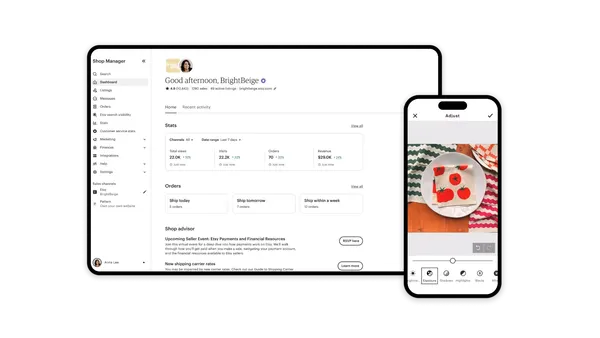Dive Brief:
- Venture capital funding raised by payments startups in 2021 reached a record high, with $31.9 billion collected as of Dec. 14, according to data from research firm CB Insights. The number of deals to that date was also a new record, at 662, the firm said.
- Swedish buy now-pay later provider Klarna had two deals in the top five: $1 billion in March and $639 million in June. E-commerce payments processor Stripe, with dual headquarters in San Francisco and Dublin, also appeared in the top five of the year, with a $600 million deal in March, that valued the company at $95 billion.
- For fintech generally, it was easily a record year, too: Blowing way past 2018's record of $52.9 billion raised, fintech firms had accumulated $94.7 billion as of the third quarter, per CB Insights.
Dive Insight:
The rapidly evolving payments landscape inspired investors to pump money into these payment technology companies at a feverish pace, setting the stage for the record-breaking year.
The investment haul in 2021 has already far outpaced 2020's totals when funding amounted to $16.1 billion, and 539 deals were recorded. The 2021 sums also top 2018, the last record-setting year for investments in the payments sector, when companies brought in $26.4 billion across 483 investments.
"It's been an incredibly active year and there's been activity really across every corner of the payments industry from a funding standpoint," said Jordan McKee, a principal research analyst at 451 Research, part of S&P Global Market Intelligence.
The change in where transactions are taking place is "a big driver at play in terms of why payments companies are seeing the growth they are, and why they're getting the attention they are from investors," he noted.
A jump in e-commerce globally, propelled partly by the COVID-19 pandemic, has expanded opportunities for merchants and prompted startups to address cross-border payments demand. Shifts from cash and card to mobile apps or e-commerce browsers have meant more volume for payment processors and buy now-pay later providers. Those have been two of the hottest segments in payments, McKee said, attracting plenty of venture capital, private equity and hedge fund attention.
"Payments really permeates everything," McKee said. "To me, the growth of fintech is sort of a tide that raises all ships within the payments industry."
Although U.S. companies like San Francisco-based SpotOn and Flutterwave and New York-based Ramp raised significant amounts last year, much of the venture funding for payment service providers went to European companies, which McKee chalked up to the fragmentation and varying needs across the European market. Those companies then look to expand into other regions, as Klarna has done in the U.S.
That "global story" excites investors due to "the sheer size of the prize as you start to pull other markets into your strategy from a volume standpoint," McKee said.
VC investors see plenty of opportunities where the existing payments infrastructure isn't serving consumers or businesses as well as it could, said Ben Malka, a partner at San Francisco-based investment firm Cota Capital, which has $1.3 billion in assets under management. Malka and Cota Partner Kevin Jacques manage the firm's fintech fund, which is focused on making early-stage investments in companies like Citcon, a mobile wallet infrastructure operation based in San Jose, California.
"It really is only the imaginations of the entrepreneurs which are the limiting factor, in terms of the new services that can come up," Malka said. "The opportunity for investments to push forward how people are served is ripe," he added, so whether 2022 will hold more of the same, "I think it's a 'yes with an exclamation point.'"
Ben Cukier, a partner at investment firm Centana Growth Partners, which has a focus on fintech investing, also envisions 2022 eclipsing 2021. There's room to grow, he said, particularly as more investors realize payments touch everything. Centana, with offices in New York City and Palo Alto, California, is currently investing its second fund, which has $385 million in committed capital.
Despite the records, investments in financial services, including the payments sphere, still account for a smaller share of overall investments than their percent contribution to the U.S. gross domestic product, Cukier said.
Given the positive economic outlook from a payments standpoint, including low-interest rates — at least for now — and a receptive environment for exits, expect the funding momentum to continue in 2022, McKee said.
"These are all factors that bode well for continued investment, so I don't see any indications that this is going to slow down," he said.
Also driving investments is the enormous amount of merger and acquisition activity in the payments space. Last year logged more than $47 billion in mergers and acquisitions and more than 150 acquisitions, McKee said. Investors are excited by the prospect of the companies they're investing in getting acquired at significant valuations.
"You could argue that that is yet another force that is sort of keeping funding flowing in this space," McKee said.














